Sunrise at Cai Rang Floating Market is not just the moment the sun peeks over the Hau River; it’s also the most vibrant time for one of the most unique markets in the Mekong Delta. The roar of boat engines, the calls of vendors, and the sight of boats laden with agricultural products and fruits create a lively and colorful picture of the Mekong Delta’s distinct culture. Cai Rang Floating Market is more than just a trading hub; it’s a captivating tourist destination where visitors can experience and discover unique traditional cultural features.
Introducing Cai Rang Floating Market: The Soul of the Mekong Delta
Cai Rang Floating Market, a cultural icon of Can Tho and the entire Mekong Delta, has existed and thrived for hundreds of years, becoming an indispensable part of the economic and cultural life of the local people. More than just a market, Cai Rang is a miniature water world where all trading and daily activities take place on boats and vessels. The uniqueness and bustling atmosphere of the floating market have attracted visitors from all over the world to explore and experience.
Cai Rang Floating Market is located on the Can Tho River, near Cai Rang Bridge, about 6km by road from the center of Can Tho city and about 30 minutes by boat from Ninh Kieu Wharf. This convenient location has made the floating market a crucial trading point in the region, attracting goods from neighboring provinces and cities.
The market usually starts operating very early, around 3-4 am, and lasts until 8-9 am. The busiest time is around 5-7 am, when the dawn breaks, painting the river pink. Visiting Cai Rang Floating Market at this time, visitors will feel the bustling and lively atmosphere of the early morning market, immersing themselves in the rhythm of life of the local people.
History and Unique Cultural Features of Cai Rang Floating Market
Cai Rang Floating Market originated in the early 20th century, stemming from the need for exchange and trade of goods by people in the riverine areas. Due to underdeveloped road交通 systems, waterways were the primary transportation routes, making the floating market a vital center for gathering and transferring goods. Initially, the floating market consisted of small trading points, gradually developing into the large and bustling market it is today.
The most distinctive cultural feature of Cai Rang Floating Market is the “treo bẹo” (hanging sample) form of trading. To help customers from afar recognize what goods a boat is selling, vendors hang samples of their featured products on a pole (bẹo pole) at the bow of their boats. For example, if selling sweet potatoes, they hang a sweet potato; if selling watermelons, they hang a watermelon; if selling clothes, they hang an outfit, and so on. The “treo bẹo” method not only makes trading easier and more convenient but also adds a unique and interesting touch to the floating market.
In addition, the culinary culture on the floating market is also very special. Visitors can enjoy breakfast on a boat with Mekong Delta specialties such as “hu tieu” (rice noodle soup), “bun rieu” (crab noodle soup), “banh canh” (thick noodle soup), coffee, and more, right on mobile food boats. Having breakfast while admiring the bustling floating market scene and listening to the waves lapping against the boat is an unforgettable experience for anyone.
Must-Try Experiences at Cai Rang Floating Market
Visiting Cai Rang Floating Market, tourists not only witness the unique riverside market scene but can also participate in many exciting experiential activities:
1. Watching the Sunrise and the Early Morning Market Atmosphere: The sunrise moment at Cai Rang Floating Market is one of the most rewarding experiences. As the sun gradually rises, the entire market brightens in the morning light, the river sparkles with golden hues, creating a beautiful and vibrant scene.
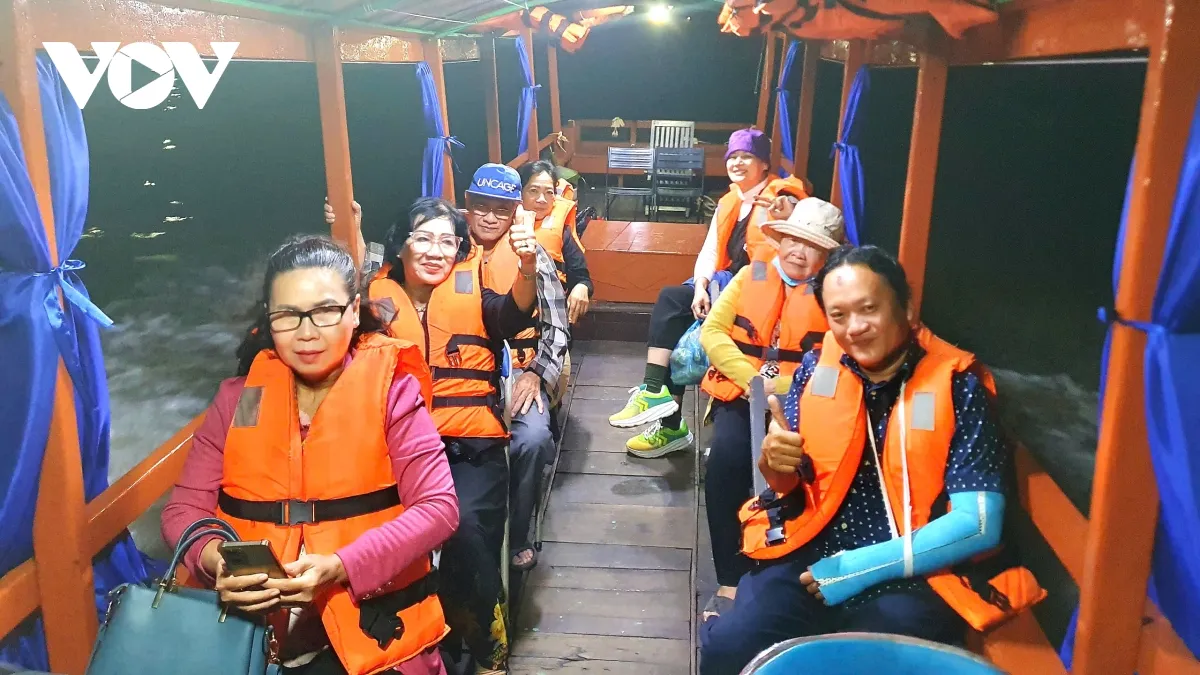
2. Exploring Trading Activities on the River: Tourists can rent small boats to weave through the market, directly observing and experiencing trading activities on the river. Admire boats loaded with goods, from fruits and vegetables to necessities, and feel the bustling and hurried pace of the early morning market.
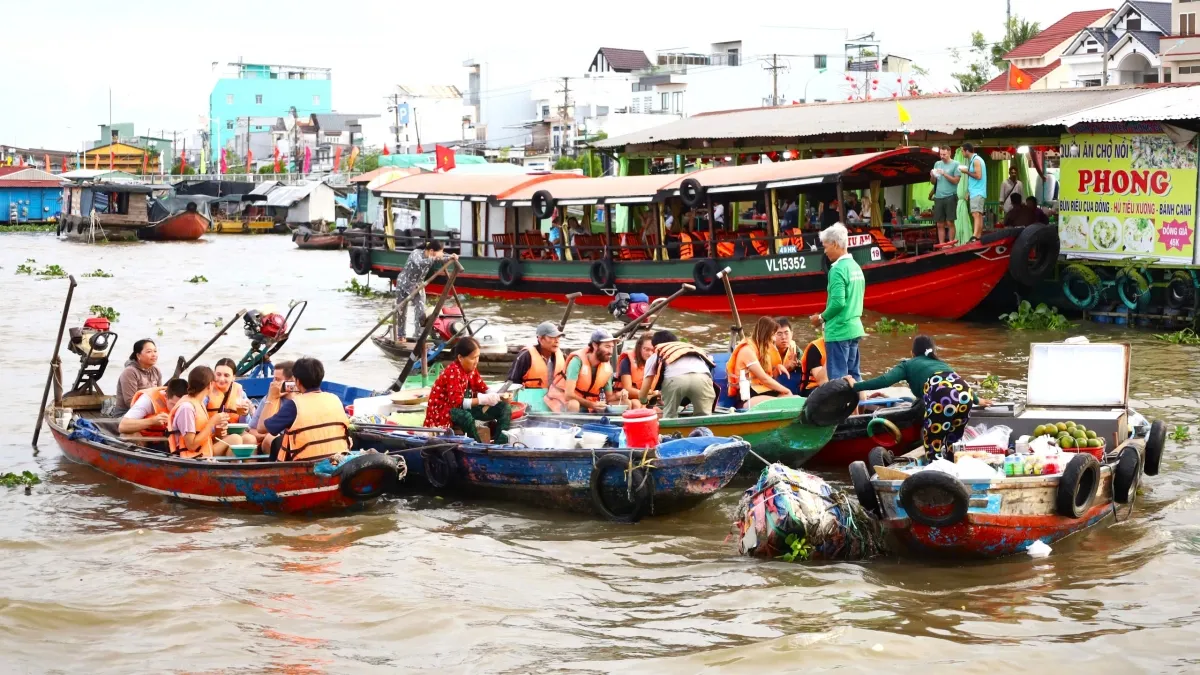
3. Enjoying Floating Market Cuisine: Don’t miss the opportunity to enjoy breakfast at the floating market. Dishes like “hu tieu”, “bun rieu”, “banh canh”, coffee, etc., are prepared and served right on the boats, offering unique flavors and a distinctive culinary experience.

4. Interacting with Locals: The people at the floating market are very friendly and hospitable. Visitors can chat, learn about their lives and culture, and hear interesting stories about the floating market and the Mekong Delta region.
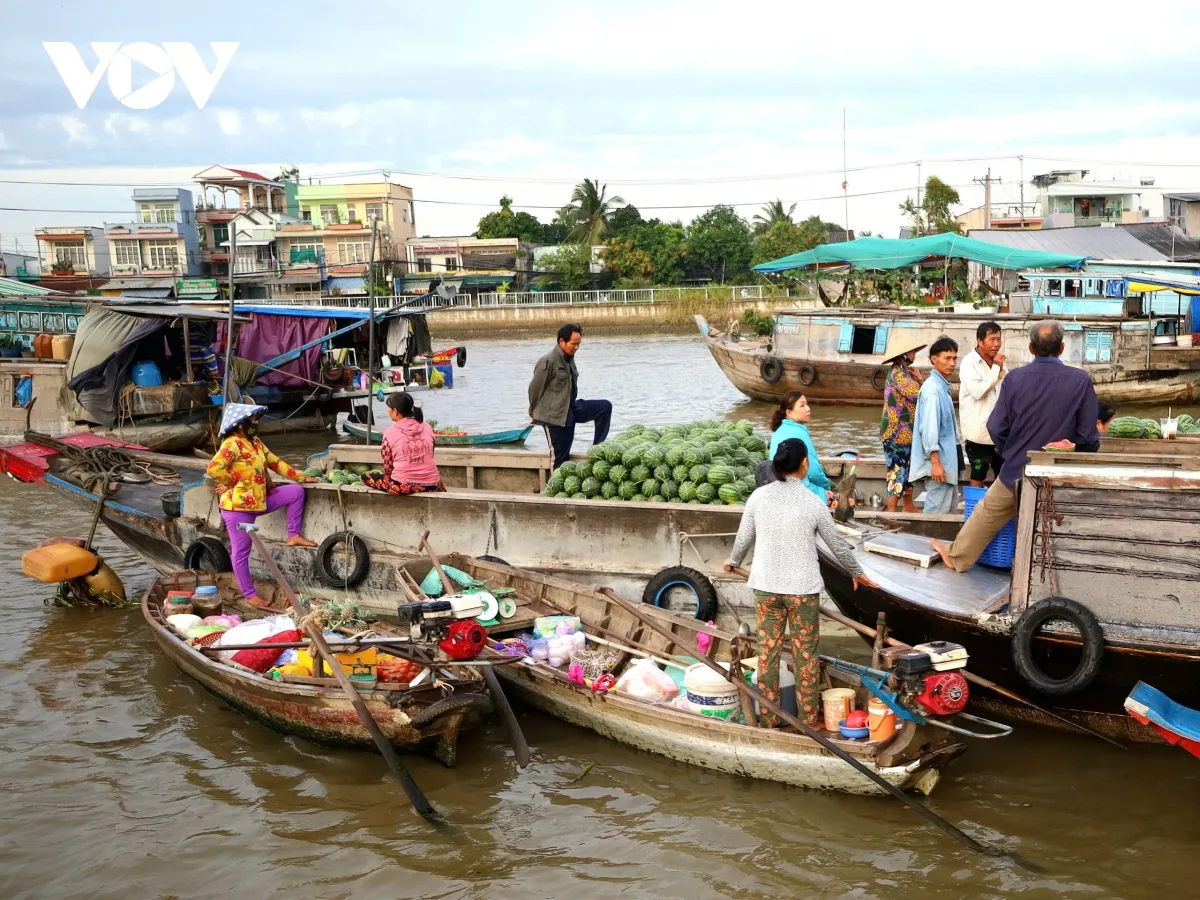
5. Visiting Nearby Traditional Craft Villages: Around Cai Rang Floating Market, there are many famous traditional craft villages such as “hu tieu” noodle village, rice paper village, and “com” (young rice flakes) making village. Tourists can combine visiting the floating market with exploring these craft villages to better understand the economic and cultural life of the local people.
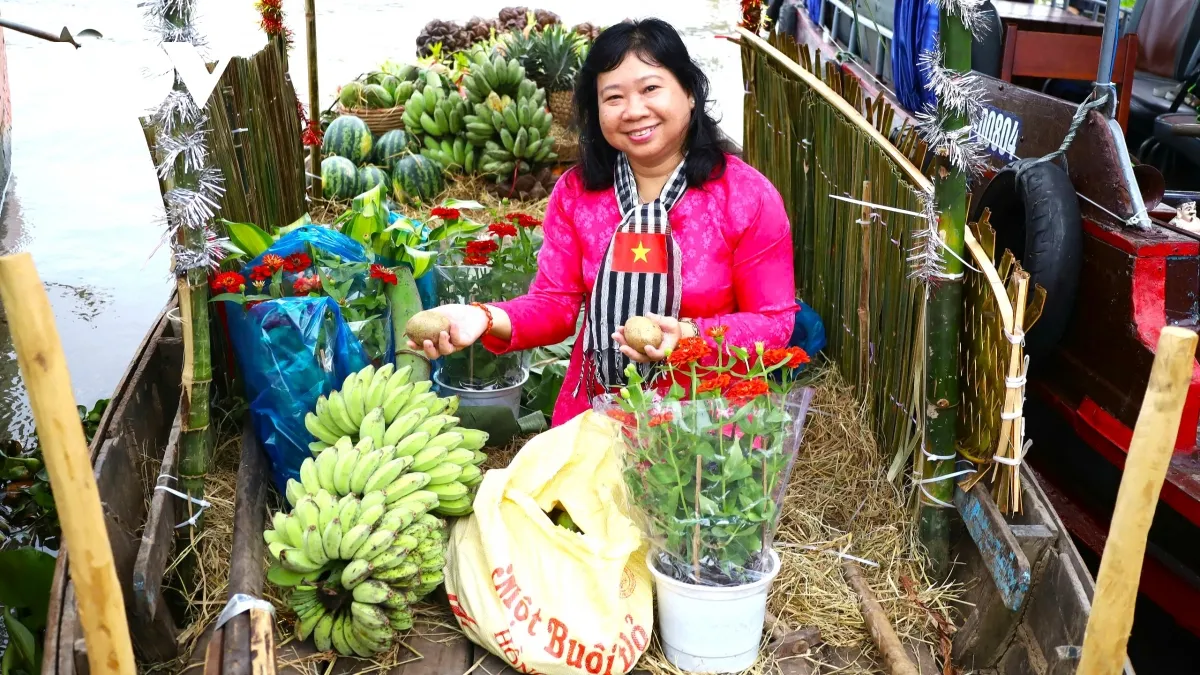
Unique Cuisine at Cai Rang Floating Market: Flavors of the Mekong Delta
Cai Rang Floating Market is not only a place to trade goods but also a culinary paradise with countless delicious dishes typical of the Mekong Delta.
- Hu Tieu (Rice Noodle Soup): The most familiar and famous dish at Cai Rang Floating Market. “Hu tieu” here has a rich flavor, clear and sweet broth, chewy noodles, served with pork, shrimp, quail eggs, etc.
- Bun Rieu (Crab Noodle Soup): A rustic noodle soup with a delicious and rich crab broth, served with tofu, congealed blood, tomatoes, and fresh vegetables.
- Banh Canh (Thick Noodle Soup): “Banh canh” with fish cake, “banh canh” with pork knuckles, etc., are popular “banh canh” dishes at the floating market. Chewy and soft noodles, sweet broth, flavorful fish cake or pork knuckles, are all appealing.
- Coffee: Enjoying a delicious iced milk coffee on a boat in the early morning is an interesting experience. Coffee at the floating market is often brewed in the traditional style, strong and fragrant.
- Fruits: Cai Rang Floating Market is a gathering place for many fresh and delicious fruits of the Mekong Delta such as Hoa Loc mangoes, Lo Ren star apples, rambutan, durian, mangosteen, etc. Visitors can buy fresh fruits as gifts or enjoy them right at the market.
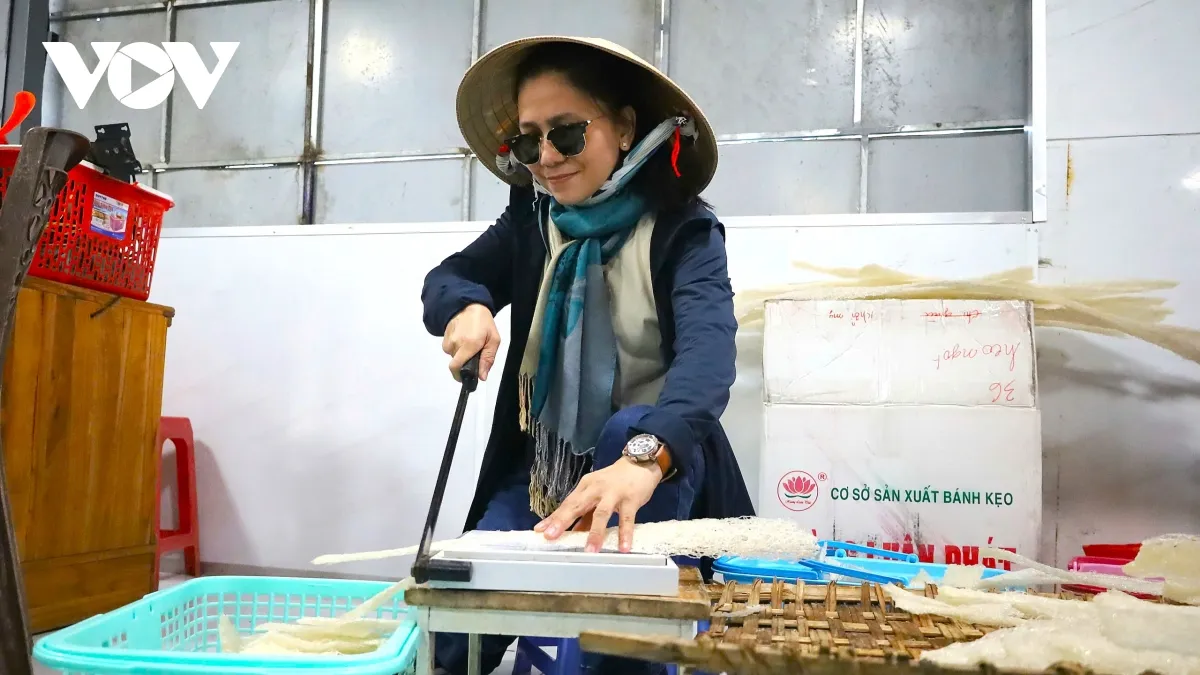
Tips for a Complete Cai Rang Floating Market Tour
To have a complete and memorable visit to Cai Rang Floating Market, tourists should note a few things:
- Time: The best time to visit Cai Rang Floating Market is in the early morning, from 5-7 am. This is when the market is busiest, the air is fresh and cool.
- Transportation: You can get to Cai Rang Floating Market by boat from Ninh Kieu Wharf or An Binh Wharf (Cai Rang). It takes about 30 minutes from Ninh Kieu Wharf and closer from An Binh Wharf.
- Attire: Wear comfortable, neat, and easy-to-move clothing. Bring a hat, sunscreen to protect your skin from the sun.
- Money: Bring cash for convenient shopping and dining at the floating market.
- Ask for Prices: Ask for prices before buying to avoid being overcharged.
- Maintain Hygiene: Do not litter in the river, maintain the general cleanliness of the floating market.
- Safety: Pay attention to safety when moving on boats, especially for children.
Preserving and Developing Cai Rang Floating Market: Maintaining Traditional Cultural Beauty
In recent years, Cai Rang Floating Market has undergone certain changes due to the development of road交通 and modern business forms. The number of boats on the floating market has decreased somewhat compared to before. However, local authorities and the Can Tho tourism industry have been implementing many measures to preserve and develop Cai Rang Floating Market, maintaining this unique traditional cultural beauty.
Measures to preserve and develop Cai Rang Floating Market include:
- Infrastructure Investment: Upgrading piers, building public toilets, lighting systems, ensuring environmental sanitation, etc.
- Developing Tourism Products: Diversifying tourism products, combining visits to the floating market with traditional craft villages, nearby ecological and cultural tourist attractions.
- Tourism Promotion and Marketing: Strengthening promotion and introduction of Cai Rang Floating Market on media channels, domestic and international tourism channels.
- Supporting Local People: Creating conditions for local people to participate in tourism activities, increase income, and improve their lives.
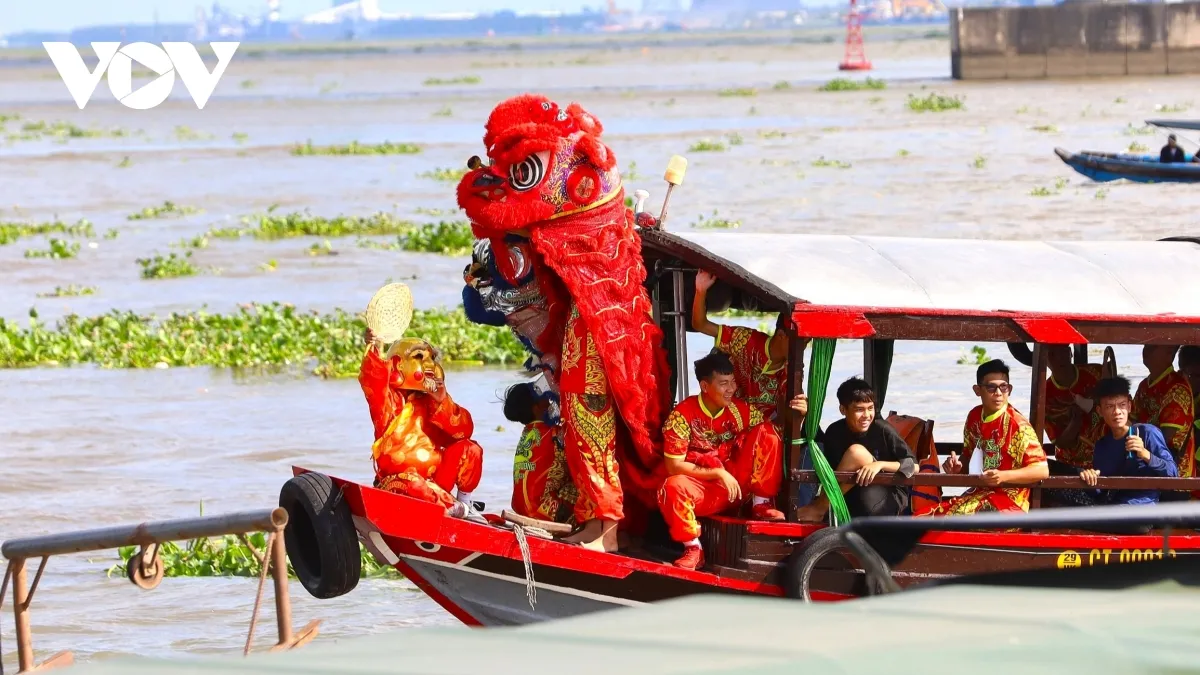
With preservation and development efforts, Cai Rang Floating Market is not only an attractive tourist destination but also a distinctive cultural symbol of the Mekong Delta, which needs to be preserved and promoted for future generations.
Conclusion
Cai Rang Floating Market is not just an ordinary market; it is a part of the soul of the Mekong Delta, where culture, history, and human life blend together. Coming to Cai Rang Floating Market, visitors not only shop and enjoy cuisine but also experience and discover unique cultural beauties, feeling the sincerity and hospitality of the Mekong Delta people. Cai Rang Floating Market is definitely a must-visit destination in your journey to explore the Mekong Delta. Are you ready for this exciting journey to discover Cai Rang Floating Market?